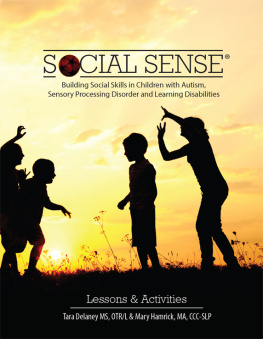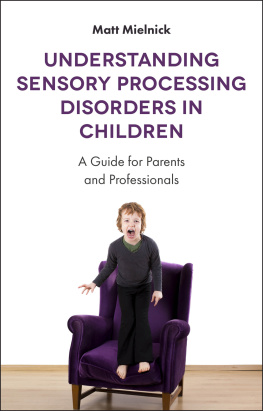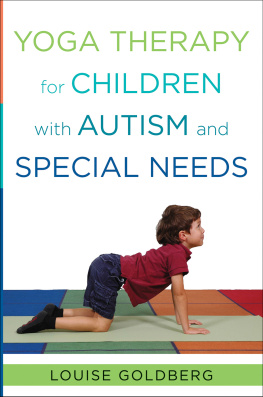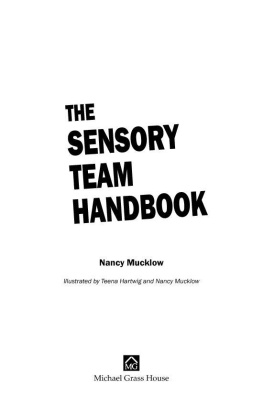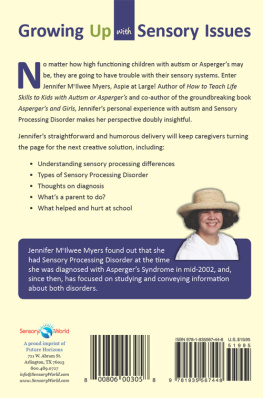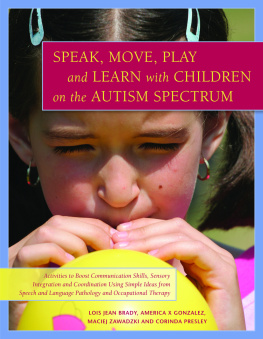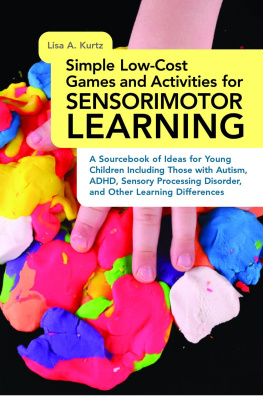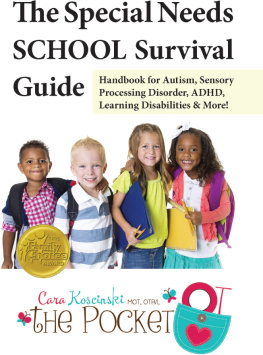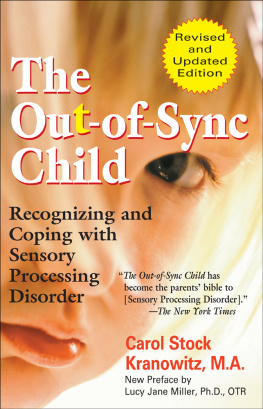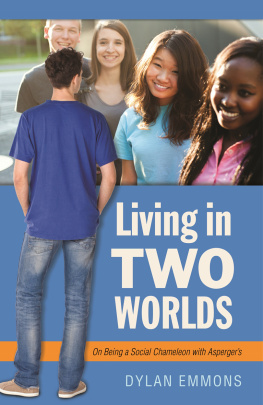SOCIAL SENSE
Building Social Skills in Children with Autism,
Sensory Processing Disorder and Learning Disabilities
T ARA D ELANEY , MS, OTR/L
M ARY C. H AMRICK , MA, CCC-SLP
Copyright 2014 by Tara Delaney, MS, OTR/L and Mary C. Hamrick, MA, CCC-SLP
Published by
PESI Publishing & Media
PESI, Inc
3839 White Ave
Eau Claire, WI 54703
Editing and Desing: Bookmasters
Cover Design: Matt Pabich
Printed in the United States of America
ISBN: 978-1-937661-33-5
All rights reserved.
Dedication
The book is dedicated to our fathers (Mary John P. McCarthy, Tara Denis McCaghey) who taught us that humor is the best way to connect with others, that those around us always deserve our attention and respect, and that anything is possible. We love our Dads.
Table of Contents
Objectives:
1. Students increase attention and responsiveness to others.
2. Students become familiar with the concept of being a Social Sense scientist.
3. Students will identify scientists that they are familiar with and what contributions they made.
4. Students understand the components of a scientific experiment.
Objectives:
1. Students become more familiar with the concept of being a Social Sense scientist.
2. Students begin to see how their senses are actually scientific tools that aid them in navigating their social environment.
3. Understand how the brain controls our actions.
4. Learn a student-friendly definition of the sensory systems.
5. Gain a basic understanding of how sensory processing affects us socially.
Objectives:
1. Students will understand that their gustatory sense works in conjunction with their olfactory sense contributing to what they like and dislike in foods.
2. Understand how food influences our memory of situations.
3. Learn which foods are good for our brain and body and what foods just taste good.
4. Learn about the Venn diagram in a fun way (two students).
5. Find commonalities between participants.
Objectives:
1. Students explore their olfactory sense.
2. Students understand how their olfactory sense influences them socially.
3. Learn about Theory of Mind, using a concrete example of how, when presented with the same stimulus, people react and respond differently.
4. Understand that people have different episodic memories based on stored sensory information that affects their perception of sensory information today in various situations.
Objectives:
1. Students increase self-awareness about their own vestibular sense.
2. Experiment with comfortable distances and appropriate voice volume depending on distance.
3. Learn how to use vestibular input to increase attention or decrease anxiety in social situations.
4. Participate in the hula hoop experiment, using concrete examples of the speaking and thinking bubbles tool.
Objectives:
1. Students explore their proprioceptive system.
2. Understand how their proprioceptive system influences them socially.
3. Learn what body input makes them feel calm.
4. Explore nonverbal communication and its impact on receiving and giving social cues.
Objectives:
1. Students explore their tactile system.
2. Understand how their tactile system influences them socially.
3. Students will begin to understand that their brains can control their bodies response to incoming stimuli and information.
4. Students begin to learn how tactile strategies can help regulate them.
5. Recognize how our touch system is tied to our understanding of language.
6. Increase attention and responsiveness to others.
Objectives:
1. Students increase self-awareness about their own auditory sense.
2. Isolate and identify sounds in their environment.
3. Understand the importance of listening as a skill and how it plays into all social situations.
4. Learn auditory discrimination strategies to calm themselves if overwhelmed.
Objectives:
1. Students will explore their visual sense.
2. Establish a habit of scanning their environment left to right.
3. Attach social meaning to the visual information.
4. Practice using thinking-speaking bubbles to control impulsive reactions.
5. Learn how to use visualization to facilitate future social success.
6. Discover strategies to increase visual memory.
7. Understand how auditory information either helps or hinders their ability to take in visual information.
Objectives:
1. Students review information they have learned about their own sensory systems in previous lessons.
2. Understand that their behavior is closely linked to how they interpret sensory information.
3. Learn specific sensory and brain tools for calming themselves.
4. Review how to use past memories and future visualizations to get through stressful social situations.
5. Understand Response-Abilityour ability to choose how we respond to incoming stimuli.
Objectives:
1. Students understand the importance of nonverbal communication and recognize the impact of tone of voice on our verbal messages.
2. Begin to understand what they can communicate without words.
3. Recognize the importance of attending to the nonverbal cues that others are giving them in order to be socially more in tune with others.
4. Explore positive and negative nonverbal information.
5. See how successful social interactions often are reflected in two persons mirroring each others attitudes and feelings.
Objectives:
1. Students make the abstract nuances of social interaction concrete.
2. Practice inclusive conversations.
3. Learn how to be a Social Scientist observer and understand why interactions/conversations are successful and why they are not.
4. Use a ball-throwing activity to demonstrate that timing, sequence, and rhythm are crucial for successful conversations.
Objectives:
1. Students review a concrete example of editing written work and learn how it differs from editing real time social scenarios.
2. Understand the power of visualization as a social editing tool.
3. Practice calming strategies to help them through difficult social situations.
4. Understand how positively editing a response will change the outcome of a situation.
5. Act as directors and edit their own social scenarios.
6. Have opportunities to visualize themselves in positive social situations, thereby increasing likelihood of future social success.
7. Review the visualization activity from .
Objectives:
1. Students experiment with laughter and what makes them laugh.
2. See how nonverbal language adds humor to words.
3. Understand how a humorous perspective can change their feelings and attitudes.
4. Experiment with and share in a discussion of When does funny become not funny?
Objectives:
1. Students recap what they learned as Social Sense scientists and describe what sensory tool helps them the most in social situations.
2. Learn to continuously ask questions about social situations and understand that friendships take time.
3. Use positive imagery (visualization) when inviting and planning an activity with a friend.
Next page
